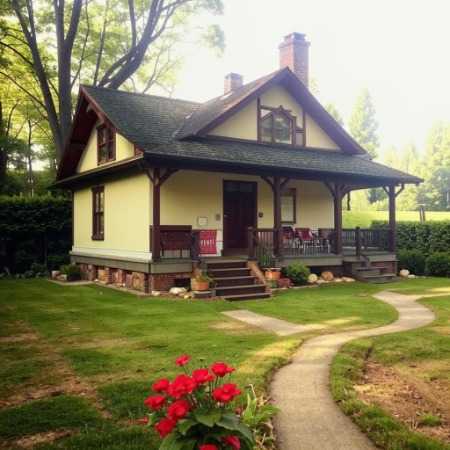The technology of soft shingle roofing is one of the most popular in modern construction and roof renovation. Soft shingles, also known as bitumen or flexible shingles, consist of a base impregnated with bitumen and covered with mineral granules. Thanks to their unique properties, they combine high strength, waterproofing, flexibility, and aesthetic appeal. Soft shingles allow creating roofs of various shapes and configurations, making them a versatile solution for private homes and commercial buildings.
This article provides a detailed overview of the installation technology of soft shingles, from substrate preparation to final finishing. It also covers material selection, necessary tools, and recommendations for maintenance and care.
History and Features of Soft Shingles
Soft shingles appeared in the 20th century and quickly gained popularity due to ease of installation and good performance characteristics. The base is fiberglass or polyester mat impregnated with modified bitumen. One side is covered with mineral granules protecting against UV, the other side has an adhesive layer for reliable fixing.
A key advantage is flexibility, allowing installation on complex roofs including dormers and bay windows. The material is highly waterproof and resistant to mechanical damage.
Soft shingles also provide good sound insulation, important in regions with heavy precipitation or strong winds. Their relatively low weight reduces load on rafters, enabling use on older structures without reinforcement.
Preparing the Substrate for Soft Shingles
Quality installation begins with proper substrate preparation. The base must be flat, strong, dry, and clean. Usually, a continuous sheathing of wooden boards or moisture-resistant plywood is used. The thickness should ensure sufficient rigidity and prevent sagging.
The rafter system condition must be checked. All elements should be sturdy, free from rot, mold, or damage. Repairs or replacements are done if necessary.
Next, a waterproof membrane or underlayment is installed. This layer provides additional moisture protection, especially in vulnerable areas. The membrane is laid with overlaps and securely fastened to avoid wrinkles and air pockets.
Tools and Materials for Installing Soft Shingles
Installing soft shingles requires specific tools. A sharp utility knife is essential for cutting shingles, along with a hammer or nail gun for fastening shingles and sheathing. Measuring tape, level, and pencil are needed for marking.
Special roofing nails with wide heads and anti-corrosion coating ensure reliable fastening and prevent rust.
Underlayment, sealants, and adhesives are also necessary for joints and flashings. Ridge caps and valley trims require special profiles or shingles.
Installation Technology: Step-by-Step
Installation consists of several sequential steps. First, the underlayment is laid on the prepared base, fastened with nails with overlaps to form a continuous protective layer. Special attention is paid to flashings around walls, pipes, and vents, sealed with sealants and additional waterproofing.
Next, the shingles are installed. The first course is aligned along the eaves with overlaps, ensuring neat appearance and moisture protection. Each shingle is nailed at designated spots, usually along the upper edge.
Subsequent rows are installed with staggered seams for waterproofing. In valleys, reinforced installation with extra waterproofing and sealing is applied.
Ridge caps are installed last, protecting the roof ridge from water and wind. They are nailed and sealed as needed.
Installation on Complex Roofs
Complex roofs with multiple transitions, dormers, and vents require special attention. Maximum waterproofing and secure fastening are essential.
Special flashing strips and seals are used at vertical intersections to prevent water ingress. Sealants and adhesives add extra protection.
Valleys receive reinforced underlayment and double overlapping shingles to prevent leaks.
Vent pipes and chimneys use special flashing collars and sealants to ensure durability.
Weather Impact on Installation and Use
Weather strongly affects installation and performance. Installation is recommended in dry, warm weather for proper adhesive bonding and to avoid moisture under shingles.
Winter installation is possible but requires special adhesives and careful handling of less flexible material.
Soft shingles resist rain, snow, and wind but require secure fastening during strong winds.
Regular snow and debris removal prolongs service life and prevents damage.
Advantages and Disadvantages
Soft shingles offer flexibility and light weight, suitable for complex roofs. They provide good waterproofing and mechanical resistance.
Sound insulation is excellent, reducing rain and hail noise. A wide color and shape range allows creative designs.
Disadvantages include shorter lifespan (20–30 years) compared to ceramic tiles. Material is sensitive to temperature swings, risking cracking if installed improperly.
Proper substrate and professional installation are crucial to avoid leaks and premature wear.
Maintenance Recommendations
To extend lifespan, regular inspections and timely repairs are necessary. Remove leaves, branches, and debris that trap moisture and cause rot.
Damages or delamination should be repaired with roofing adhesives. Ridge caps, valleys, and flashings need frequent checks as these are vulnerable spots.
Cleaning moss and fungi prevents material degradation and maintains appearance.
Comparison with Other Roofing Materials
Compared to metal tiles, soft shingles are lighter and more flexible, allowing installation on complex roofs without structural reinforcement. They provide better sound insulation but have shorter lifespan.
Compared to ceramic tiles, soft shingles are more affordable and easier to install but less durable and mechanically resistant.
Compared to corrugated metal sheets, soft shingles offer superior aesthetics and sound insulation but require more care.
| Parameter | Soft Shingles | Metal Tiles | Ceramic Tiles | Corrugated Sheets |
|---|---|---|---|---|
| Weight (kg/m²) | 8–12 | 4–6 | 40–50 | 4–7 |
| Service Life (years) | 20–30 | 30–50 | 100+ | 25–40 |
| Flexibility | High | Low | Low | Low |
| Sound Insulation | Good | Low | High | Low |
| Cost | Medium | Medium | High | Low |
| Substrate Requirements | High | Medium | High | Low |
Conclusion
Soft shingle roofing technology is a complex process requiring thorough preparation and adherence to installation steps. Soft shingles combine functionality, aesthetics, and ease of installation.
Proper material choice, quality substrate, and professional installation ensure a durable, reliable roof. Following recommendations will extend the roof’s lifespan, providing long-term protection against moisture and weather.

